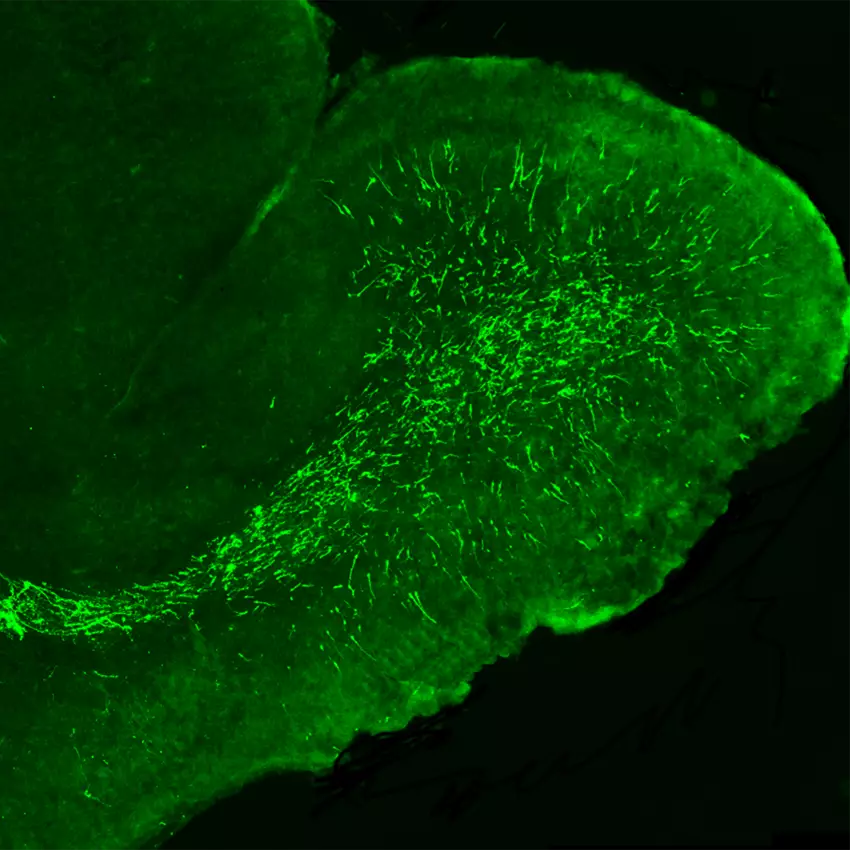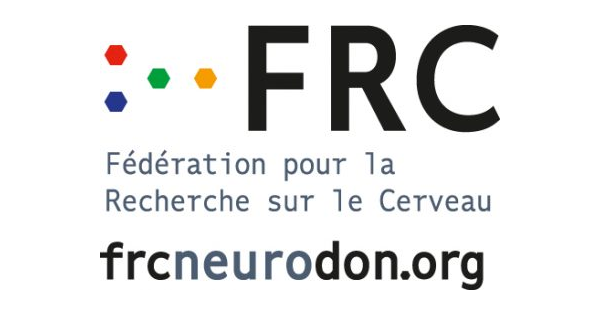Contrôle moléculaire de la neurogenèse
Nous étudions les mécanismes moléculaires qui contrôlent la détermination et la prolifération des cellules souches neurales, leur différenciation en neurones fonctionnels et leur dérégulation dans le cancer du cerveau.
Dans le processus de développement du cerveau, plus de 1000 types différents de neurones sont générés à partir d’une population de cellules souches initialement homogène. À quel niveau cette diversité est-elle codée ? Comment la prolifération des cellules souches est-elle contrôlée pour générer le nombre correct de neurones ? Que se passe-t-il lorsque le contrôle de la prolifération se dérègle et qu’un cancer du cerveau se développe ? Comment les neurones s’intègrent-ils dans le circuit et quelle est leur fonction spécifique?
Nous utilisons la neurogenèse en cours qui se produit dans le cerveau postnatal des mammifères pour répondre à ces questions et identifier les signaux et les cascades moléculaires qui contrôlent les étapes spécifiques de la production de neurones. Un accent particulier de notre travail est mis sur le rôle des ARN qui ne codent pas pour des protéines, mais qui ont des fonctions régulatrices pour fournir la stabilité et la flexibilité nécessaires à la génération et au maintien d’un cerveau fonctionnel.
Publications
Disruption of NEUROD2 causes a neurodevelopmental syndrome with autistic features via cell-autonomous defects in forebrain glutamatergic neurons
Stem cell regionalization during olfactory bulb neurogenesis depends on regulatory interactions between Vax1 and Pax6
Neuronal integration in the adult mouse olfactory bulb is a non-selective addition process
Zic-proteins are repressors of dopaminergic forebrain fate in mice and C. elegans
miR-200 family controls late steps of postnatal forebrain neurogenesis via Zeb2 inhibition
Reelin is a detachment signal in tangential chain-migration during postnatal neurogenesis.
Effects of sensory deprivation on glomerular interneurons in the mouse olfactory bulb: differences in mortality and phenotypic adjustment of dopaminergic neurons
Disruption of NEUROD2 causes a neurodevelopmental syndrome with autistic features via cell-autonomous defects in forebrain glutamatergic neurons
Stem cell regionalization during olfactory bulb neurogenesis depends on regulatory interactions between Vax1 and Pax6
Neuronal integration in the adult mouse olfactory bulb is a non-selective addition process
Zic-proteins are repressors of dopaminergic forebrain fate in mice and C. elegans
miR-200 family controls late steps of postnatal forebrain neurogenesis via Zeb2 inhibition
A dual role for planar cell polarity genes in ciliated cells
[Micro-RNA miR-7a controls the production of dopaminergic neurons in the mouse forebrain].
Efficient neuronal in vitro and in vivo differentiation after immunomagnetic purification of mESC derived neuronal precursors.
Plexin-B2 regulates the proliferation and migration of neuroblasts in the postnatal and adult subventricular zone.
miR-7a regulation of Pax6 controls spatial origin of forebrain dopaminergic neurons
Agrin-signaling is necessary for the integration of newly generated neurons in the adult olfactory bulb
Dynamic expression of the pro-dopaminergic transcription factors Pax6 and Dlx2 during postnatal olfactory bulb neurogenesis.
Targeted electroporation of defined lateral ventricular walls: a novel and rapid method to study fate specification during postnatal forebrain neurogenesis.
The SRC homology 2 domain protein Shep1 plays an important role in the penetration of olfactory sensory axons into the forebrain.
Expression and function of CXCR7 in the mouse forebrain.
Coupling between hydrodynamic forces and planar cell polarity orients mammalian motile cilia.
NeuroD1 induces terminal neuronal differentiation in olfactory neurogenesis.
Gene expression analysis defines differences between region-specific GABAergic neurons.
Efficient in vivo electroporation of the postnatal rodent forebrain.
Molecular interaction between projection neuron precursors and invading interneurons via stromal-derived factor 1 (CXCL12)/CXCR4 signaling in the cortical subventricular zone/intermediate zone.
Glial conversion of SVZ-derived committed neuronal precursors after ectopic grafting into the adult brain.
Dynamics of Cux2 expression suggests that an early pool of SVZ precursors is fated to become upper cortical layer neurons.
Purification of neuronal precursors from the adult mouse brain: comprehensive gene expression analysis provides new insights into the control of cell migration, differentiation, and homeostasis.
Reelin is a detachment signal in tangential chain-migration during postnatal neurogenesis.
Actualités
Séminaire Interne par Mike Altounian
Rejoignez-nous le 06/07/2023 à 12h30 dans l’Amphi 12 pour une conférence passionnante d’un des membres de notre équipe : Mike Altounian ! Le titre de
NeuroStories 2022: Emprise de tête
Mike Altounian, de l’équipe Cremer, a présenté ses travaux sur les effets de l’alcool sur le développement des circuits neuronaux.
7 équipes de l’IBDM ont reçu une bourse ANR
7 équipes de l’IBDM ont reçu des subventions de l’Agence Nationale pour la Recherche (ANR) en 2021. Félicitations à Vincent Bertrand, Harold Cremer, Pascale Durbec,
Dans un article publié dans Elife, Nathalie Coré de l’équipe Cremer décrit une nouvelle cascade de régulation, impliquant des facteurs de transcription et un microARN, qui contrôle comment les cellules souches neurales déterminent quel type de neurone elles produisent.
Neuronal integration in the adult mouse olfactory bulb is a non-selective addition process
Une étude récente mené par Jean-Claude Platel de l’équipe d’Harold Cremer publié dans Elife a pu montrer que ces neurones nouvellement générés s’additionnent de façon permanente dans le réseau neuronal du bulbe olfactif entrainant une augmentation de la population neuronale ainsi que de la taille du bulbe olfactif.
No jobs opportunities found..
















